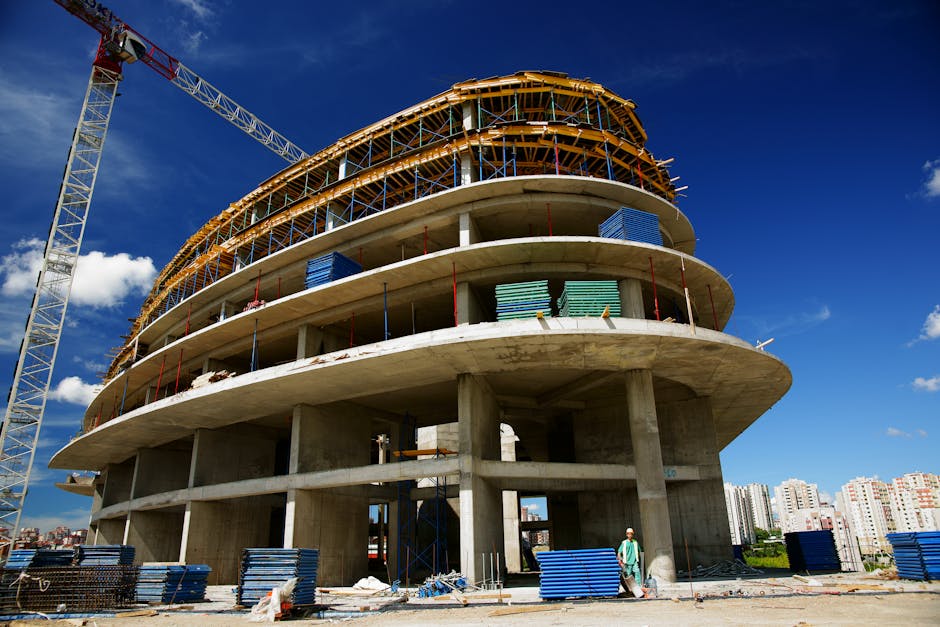The importance of sustainable concrete solutions in construction
Sustainable concrete solutions are becoming crucial in the construction industry due to their focus on reducing environmental impact. By using sustainable concrete, builders can contribute to the longevity of our planet while also creating structures that are durable and efficient. Recycled materials, enhanced energy efficiency, and lower carbon footprint are some key benefits of opting for sustainable concrete solutions. Building with these materials not only meets construction needs but also paves the way for a more eco-friendly future.
Advantages of using sustainable concrete in building projects
Sustainable concrete offers numerous benefits for construction projects. Here’s why opting for sustainable concrete is a smart choice:
- Long-lasting: Sustainable concrete structures are durable and have a longer lifespan compared to traditional concrete buildings.
- Environmentally friendly: By using sustainable concrete, you reduce carbon emissions and promote eco-friendly building practices.
- Cost-effective: While initial costs might be slightly higher, the long-term savings from energy efficiency and maintenance make sustainable concrete a wise investment.
- Innovative: Sustainable concrete solutions utilize cutting-edge technologies and methodologies to improve building performance and efficiency.
- Healthier living spaces: Sustainable concrete contributes to healthier indoor environments by reducing pollutants and improving air quality.
Types of sustainable concrete solutions available
Sustainable concrete solutions are becoming more popular in the construction industry. Some types include:
- Recycled Concrete: Made from old concrete, reducing the need for new materials.
- Green Concrete: Uses less energy and water, emitting less carbon dioxide during production.
- Ferro-Cement: Combines a thin layer of concrete with layers of mesh or metal, reducing materials used.
- Geopolymer Concrete: Uses industrial waste like fly ash, reducing the environmental impact.
These sustainable options are not only eco-friendly but also contribute to a more environmentally responsible construction process.
Environmental benefits of sustainable concrete
Concrete is one of the most widely used construction materials globally, but its production can have a significant environmental impact. Sustainable concrete solutions aim to lessen this impact. By using sustainable concrete, we can:
- Reduce carbon footprint: Sustainable concrete production methods can lower greenhouse gas emissions, contributing to a greener environment.
- Minimize waste: Recycling materials or using alternative materials in concrete production helps reduce waste sent to landfills.
- Preserve natural resources: Sustainable concrete solutions often involve using renewable or recycled resources, preserving natural materials like sand and gravel.
Choosing sustainable concrete not only benefits the environment but also promotes a more eco-friendly approach in the construction industry.
Innovations in sustainable concrete technology
Sustainable concrete technology is evolving in the construction industry. Companies are developing new methods to reduce carbon emissions and increase durability. Some innovations include the use of recycled materials like fly ash or blast furnace slag which reduces the need for new resources and minimizes waste. Another advancement is the development of self-healing concrete, which can repair cracks on its own, increasing the lifespan of structures. These innovations are reshaping how buildings are constructed, making them more environmentally friendly and efficient.
How sustainable concrete contributes to reducing carbon footprint
Concrete production emits a significant amount of carbon dioxide. By using sustainable concrete solutions like recycled aggregates, alternative cements, and carbon-capture technology, we can reduce the carbon footprint of construction projects. Recycled aggregates lower the need for new raw materials, alternative cements emit less CO2 during production, and carbon-capture tech captures CO2 emissions from concrete production. This shift towards sustainable concrete is crucial in combating climate change and creating environmentally-friendly buildings.
Case studies: Successful implementation of sustainable concrete solutions
Sustainable concrete solutions are gaining popularity in the construction industry due to their eco-friendly nature. Here are a few case studies showcasing successful implementation of these innovative solutions:
- Case Study 1: A construction company in Europe implemented sustainable concrete solutions in a major infrastructure project, reducing carbon emissions by 20% compared to traditional methods.
- Case Study 2: A residential building project in the US utilized sustainable concrete techniques, resulting in significant energy savings over the building’s lifetime.
- Case Study 3: A bridge construction project in Asia incorporated sustainable concrete practices, leading to improved durability and reduced environmental impact.
These real-life examples demonstrate the effectiveness and benefits of adopting sustainable concrete solutions in construction projects.
Challenges and limitations of sustainable concrete in the construction industry
Sustainable concrete in construction faces challenges like higher initial costs compared to traditional concrete. This cost is mainly due to the use of alternative materials and specialized production methods. Also, the availability of sustainable concrete materials can vary regionally, making it harder for some construction projects to access them. Despite these challenges, advancements in technology and growing demand for eco-friendly building materials are driving innovation in the industry.
Future trends in sustainable concrete development
Researchers are exploring new materials like geopolymer concrete and recycled aggregates to reduce the environmental impact of concrete production. Innovations in carbon capture technology offer the potential to make concrete even more sustainable. Additionally, advancements in self-healing concrete are being studied to increase the durability of concrete structures, leading to longer lifespans and reduced maintenance costs.
Conclusion: The transformative impact of sustainable concrete solutions
Sustainable concrete solutions are revolutionizing the construction industry by reducing carbon emissions and enhancing the durability of structures. These solutions emphasize eco-friendly practices and innovative technologies to improve the environmental impact of construction projects. Engineers and architects are increasingly turning to sustainable concrete solutions to mitigate the industry’s carbon footprint and create more resilient infrastructure. Through the adoption of green building materials and energy-efficient construction methods, sustainable concrete solutions are driving a paradigm shift towards a more sustainable future in the construction sector.


